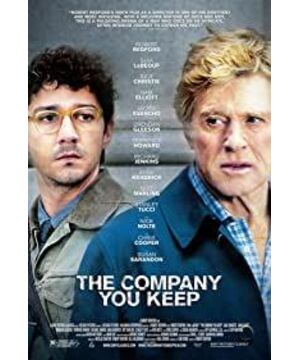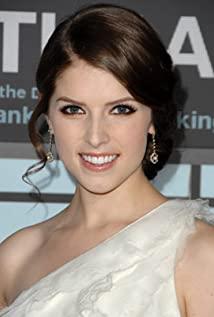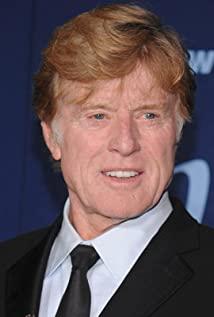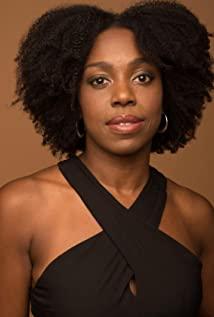era hippie very left-leaning US (Photos)
2008-05-12 08:28:13 Source: Pioneer National Historic User Reviews 16 clicks Check out that in
June, they held their annual meeting in East Lansing, Michigan. Statues of Lenin and Mao Zedong hung on the wall at the venue. The venue was full of "Red Books". became a hero. The reporter who interviewed sent back a report saying, "In the entire convention, 'revolution' was the dominant topic in the discussion." The National History of the
American Hippie
Pioneer NetEase special feature, please do not reprint
1968 should be a watershed for this country, also me personally A watershed in development and political development. A spate of domestic and international events occurred: the New Year's offensive, Johnson's withdrawal from the presidential race, the assassination of Dr. King, the assassination of Senator Robert Kennedy, and the ongoing escalation of the Vietnam War. - Hillary
Linda Fitzpatrick died when Hillary Rodham was a student at Wellesley College, and Diana Orton has just obtained a master's degree at the University of Michigan, worked at a child community school.
That was October 1967. In fact, these three people didn't know each other from beginning to end, and what connected them was not only the similar family background, but also independent young women, and the big era they were going through.
In 1967, an atmosphere of turmoil pervaded the United States. In Louisiana, black civil rights activism began to escalate, with some calling for "black self-government." In Vietnam, American generals recruited more and more young people, but in exchange for more casualties, Dr. Martin Luther King, Jr., who had always advocated non-violence, also began to take the lead in burning military service cards.
Astute Leon Friedman warned in his preface to A Reader of Civil Rights, published that year, "The urge to reform usually spreads before it reaches its goal, in a counter-impulse that displaces previous achievements. Obliterate them all. In 1967, as in 1877, there were clear signs that this trend had actually started.”
"Civil rights", "anti-war", "student movement"—these themes throughout the 1960s were violently mixed, fermented, and secretly brewed with explosive forces during the year. Most people had a hunch that the coming 1968 would be an eventful year.
The Death of the "Hippie"
In the summer of 1967, about 25,000 young people (and the police estimated that it reached 75,000) from all over the country came to San Francisco's Golden Gate Park to participate in a performance called "The Great Gathering of Humanity." With long hair, cheap beaded necklaces, and bare feet, they talked about words like "Zen" and "Oriental" that each other didn't understand, and some asked each other about road movies, rock music, psychedelic music the opinion of.
It's nothing if it's just a verbal conversation. The more outrageous behavior of young people is the co-administration of various types of psychotropic drugs. There's DMT, mescaline, but also marijuana leaves and methedrin, and of course, the most popular LSD psychedelic.
The climax of this activity is the free love of young men and women, living like a commune. Back then, the term "one night stand" didn't exist, but there were plenty of people who started having sex just a few hours after meeting someone they didn't know, just because the other person was a "poet."
That summer was the height of joy for the "hippie" generation. They call themselves "flower girls" and proudly call this summer "Summer of Love."
Mr Owen Fitzpatrick, who learned of the incidents from a CBS special report, had no understanding of the young man's practices, and even expressed apparent disgust.
It is no wonder that in the United States, the middle class like Mr. Owen has become the mainstream of society at that time. According to one statistic, about 60% to 70% of American families belong to this level. As Hilary Rodham would later describe his parents, Mr. Irving was one of those people: "They believed in the endless possibilities of America, and their values were rooted in their lived experience during the Great Depression. They believed in hard work, and Don't ask about the harvest. Believe in self-reliance rather than self-indulgence."
Mr. Owen did give people such an impression in the town of Greenwich, where he lives, as kind, restrained, low-key, and good at taking care of his own life.
He has 7 children. 18-year-old Linda Fitzpatrick is his sixth child and is attending an upper-class school. Neighbors and friends of the Owens described the girl as "looking to be a happy, wealthy, well-coordinated girl." The
"hippies" were partying in San Francisco when the family had just returned from Back from Bermuda vacation - this is the usual way for this middle-class family to spend the summer. Shortly after returning home, Linda also cut her hair short—long hair is typical of hippies. To that end, her mother was convinced, "she can't do what a hippie does."
But just two months later -- on October 9, in the boiler room of an apartment in New York City called Greenwich Village, Her naked body was found, along with a hippie tramp who died. Mr. Owen,
Hillary's
"incomprehensible" generation in 1968,
couldn't, because as he and his daughter talked about the August hippie bash, Linda gave her father a thumbs up. Linda shouldn't be one of them by any measure.
Linda Fitzpatrick, born in 1949, is a typical "baby boomer" generation. Beginning in 1946, the United States entered a post-war baby boom that lasted until 1964. This is a generation that has had a profound impact on American history, including former First Lady Hillary Rodham, born in 1947, Camilla, the current wife of Prince Charles, and former President Bill Clinton, born in 1946. , the current President George W. Bush.
Physically, this generation is experiencing the happiest moment in American history. Years of high economic growth have brought most families into the middle class quickly. These people, who were born with the benefits of an "abundant society," were the first in the world to enjoy the popularity of television, the growth of private cars, and the expansion of higher education. Their parents, only 15% of the people can enter the university, and to their generation, it has reached 40%.
But it's also the generation that worries parents the most in American history. They have been raised in a loving environment and do not know what hardship is. They can get everything they want, as long as they persevere. Even so, many of them began to become restless when they were in their teens. They had long hair like the Beatles, read Ginsburg verses, read Kerouac novels, made casual friends, smoked marijuana leaves or took LSD, and hummed abalone. Bob Dylan's song - "Mom, I Don't Know Why I Live".
Compared with those of her contemporaries who were rambunctious, Linda's upbringing can be regarded as a peaceful one. She completed her primary education at the Country Day School in Greenwich Township, enjoying sports and painting. Later entered an expensive boarding school called Oyle Fields, a preparatory class for a four-year college in Connecticut. Just this summer, she had never bothered her parents with bad behavior. But soon after returning from a family vacation, she told her parents that her favorite art teacher was no longer at the school, so she decided to drop out of Greenwich Village, New York, to paint by herself.
Greenwich Village is located in the West Side of New York. It was formed in the 1910s and was a gathering place for various experimental artists and writers. And when Linda moved in, it was home to hippies and punk rockers. Despite her concerns, Linda's parents agreed to her artistic pursuit.
Subsequent investigations found that Linda had two completely different faces in her hometown of Greenwich Town and Greenwich Village in New York. In Greenwich Town, Linda was a well-dressed, blond, shy boy, "a plump, pretty, healthy girl."
In Greenwich Village, Linda was a regular drug addict. , female hippie smoking marijuana, promiscuous boyfriend. "She's always got lots of other men, anyone who wanders the street—the dirtiest, bearded hippies she can find," her landlord said. Friends in Greenwich Village describe her - "is a real monster", that's what they call a drug addict.
The New York Times reported that Linda was last seen at 10 p.m. on October 8. She said that she had just taken a little medicine and that the medicine was going on. Three hours later, she and her boyfriend were killed in a filthy boiler room.
The story was in the newspapers, and countless people were shocked by Linda's death. Like Linda's parents, most people don't understand why young people with good family education, good food and clothing, and bright prospects live in two different worlds?
Suppressed emotions
no one can explain why? In the words of Dr. Albert Hoffman, the inventor of the LSD psychedelic drug, "The isolation from nature caused by materialism, industrialization and continuous urbanization, in this affluent society, life is boring and tedious. , meaningless, lost their religious, educational, and valuable foundations...they appeared at the same time as the psychedelic craze."
At that time, there was indeed a lot of dissatisfaction with young people: they were expected to be like their parents from birth. Motivated. Parents' wish is to feed and drink well for their children, let them first enter famous middle schools, then enter famous universities, and finally enter famous big companies, and become middle-class like themselves. This makes children feel like they are nothing more than machines.
With contempt for this mainstream philosophy of life, they embrace the most popular modern elements of rock music, howler poetry, LSD psychedelics, and use their bodies to criticize reality.
But soon, they discovered that this seemingly turbulent frenzy was nothing but rootless water. Reality is not something that can be easily judged by the body, and a few small setbacks can make this wave recede.
A large number of hippies swarmed Golden Gate Park, causing severe food and medicine shortages in San Francisco. This made many hippies have to endure the torture of starvation and high fever. If the pain of the body is nothing, the pain of the mind is unbearable. Tourists from all over the world flock to the hippie neighborhoods as tourist attractions, and those tokens that were considered sacred yesterday are now sold one by one as tourist souvenirs.
Of course, what is even more serious is that all kinds of drug dealers poured in here, fighting for territory. So, "love, flowers, freedom" no longer exist, only ugly, dirty, and garbage all over the floor.
The same week that Linda died, hippies held a funeral in Golden Gate Park, burning a coffin filled with orange peels, peacock feathers, mascots, flags, crosses and a marijuana-flavored biscuit. The funeral was named "Death of a Hippy".
Except for Linda, the hippies didn't die, but they did start their journey home with frail bodies and tired souls. But whoever thinks that the restlessness of the young people has subsided, is very wrong.
For young people who really have independent opinions, "rock," "poetry," and "psychedelic drugs" are just excuses to avoid responsibility. The important thing is not to criticize society, but to transform society. At least, for Hillary Rodham, who was only 21 at the time.
At the time, she was attending Wellesley College for Women. Like the dead hippie Linda, Hillary came from a middle-class family, and was influenced by the raging '60s when she was growing up. Just a few months before the "Summer of Love", she also wrote a letter to her friends worriedly about her confusion, "From last Christmas to the present, I have experienced a three-and-a-half transformation...from alienation and indifference. The college student, the fake hippie who cares about everything, the reformer of education and society, has become a half-tone narcissist."
But she is not willing to drift with the surrounding environment. In 2007, the New York Times revealed letters from her college days in which she complained to a friend who had a negative attitude, "Are you satisfied with your role?" She accused, "You seem to have decided that you want to be Be a 'responder' instead of an 'doer' and let the things around you determine your life!"
Hillary's chosen means of resistance was politics. Unlike Linda, Hillary expressed an interest in partisan politics at an early age, and she was a supporter of the Republican Party during her teenage years, naturally influenced by her father. When she first entered college, she once became the chairman of the school's Young Republican Party. Many years after the turning point of
the American student movement in the 1960s , Hillary Clinton still clearly recalled the impact on her in 1968 in her autobiography, "1968 should be a watershed for this country, as well as a watershed for my personal and political development. And international events followed one after another: the New Year’s offensive, Johnson’s withdrawal from the presidential race, the assassination of Dr. King, the assassination of Senator Robert Kennedy, and the continued escalation of the Vietnam War.”
The "New Year's Offensive" was launched by the Viet Cong in late January. In this operation, hundreds of cities in southern Vietnam were attacked, and at one point even the US Embassy in Saigon was at risk. And just before that, President Johnson had vowed that the Viet Cong would soon collapse and that the U.S. military had been winning.
By April of this year, the United States had invested more than 500,000 troops in Vietnam, and at the same time, more than 20,000 people had been killed.
Although conscription notices won't appear at women's colleges like Wellesley, Hillary is getting closer and closer to an anti-war stance, unlike her father. Actively engaged in various war-related discussions, even helping the anti-war Democratic presidential primary candidate McCarthyra vote at the beginning of the year.
The wave of the "New Year's Offensive" has not completely died down, and on April 4, 1968, Dr. Martin Luther King was assassinated.
As early as 1962, when Hillary was still in high school, she heard a speech by Dr. King. It was through that speech, titled "Staying Sober Through Revolution," that Hillary learned for the first time what the black struggle was all about. Dr. King's words that "the old order is gradually passing away, and a new order is being born, everyone should accept it and learn to love each other like brothers, or we will all be destroyed together", deeply moved this girl who was born in a conservative right-wing white middle-class family. Heart.
Hearing the news that Dr. King was stabbed, Hillary was very saddened. Her roommate recalled that when Hillary returned to the dormitory, she slammed her schoolbag on the wall, said "I can't take it," and then burst into tears. The next day, Hillary rushed out of campus and into the street. She went to a massive demonstration in front of Boston's Post Square. When she returned, she wrapped a black veil around her arm as a tribute.
But it wasn't the worst, and just two months later, Senator Robert Kennedy was assassinated again. The Democratic presidential nominee is seen as the star of hope to lead America out of trouble. Before, it was his brother, President John F. Kennedy, who inspired people to regain the American dream of "equality, democracy and justice", but the great president was assassinated as early as 1963, and now it is his brother's turn.
Even the most conservative students became manic in the spring of 1968. From Chicago to Boston, from Maryland to Ohio, American universities are boiling.
left, left
At Columbia University, students organized to occupy several school buildings, led by "Students for a Democratic Society." It was the largest student organization in the nation at the time.
The cause of the incident was that Columbia University was going to build a gymnasium, occupying part of the land in the Harlem area, which is dominated by black residents. In addition, Columbia University is inextricably linked to the Institute for Defense Analysis, which serves the Pentagon, and the students demanded that Columbia must sever ties with this institution.
In this way, the factors of "race", "civil rights", "anti-war", and "student movement" finally kinked together, and the mixture exploded. The occupation began on April 23. Within four days, five buildings were occupied by students. The students lived a commune-like life in the "occupied area".
On the eighth day, the school finally lost patience and called the police. Through the TV broadcast, more students saw the scene of the police violently retaking the building: the students who were dragged into the prison van were bleeding, but their fingers made a "V" representing victory. This time, more than 200 people were injured and more than 700 people were injured. arrested.
As a result, a larger student movement emerged. According to the statistics after the fact, 70% of the large universities in the United States were involved. In the first half of 1968 alone, there were more than 2,000 demonstrations. The students became more radical. The word "revolution" is mentioned more and more frequently.
It was this summer that Hillary went to the Democratic National Convention in Chicago. What has happened in recent years has pushed her further and further away from the right-wing conservative Republican claims. She began to break away from her father's influence and slowly became a liberal Democrat supporter.
It was at this congress rally that Hillary and her friends encountered a large number of demonstrators. "We could smell tear gas and then a large number of police approached, someone shouted curses from the crowd behind us and threw rocks forward, almost hitting us."
Seeing the angry crowd, Hillary began to think about whether there will be a revolution in the United States. It was the main topic of her debate with friends the summer after that, concluding that there would be no revolution in America. "Even if it is staged, we will not participate." Although this man who has believed in partisan politics since childhood has no illusions about politics at this time, he believes that "politics is still the only means of peaceful and gradual reform in a democratic country. Dr. Martin Luther King Jr. and Mahatma Gandhi, who advocated non-cooperation and civil disobedience, brought more real change than the million stone-throwing demonstrators."
But what Hillary didn't know was that she The demonstrations encountered were precisely manipulated by the "Students for Democracy Organization". After the Columbia University movement, the group became more radical.
In June, they held their annual meeting in East Lansing, Michigan. Statues of Lenin and Mao Zedong were hung on the wall. hero. The reporters who interviewed sent back reports that "in the whole conference, 'revolution' was the dominant topic of discussion."
In this frenzied summer, after experiencing "cultural rebellion" and "political action", young people began to consider using "Revolutionary" weapon.
Martin Luther King
disappeared
this summer and Diana Orton became a full-time activist with Students for a Democratic Society. Diana, born in 1942, was a few years older than Hillary and Linda, and wasn't even a baby boomer. But this did not prevent her from being involved in the big wave of the 1960s.
Diana also came from a wealthy background, her father was a well-known farmer in Illinois and a state legislator. In 1959, Diana entered Bryn Mawr, one of the "Seven Sisters" women's colleges. Even in her first year of college, she was a maintainer of family tradition, vigorously defending her father's ownership of the Alabama tenancy farm.
In 1961, in her third year of university, she studied for a year at the University of Munich in Germany. In her letter to her family, she mentioned for the first time the problems of American society, the status of women and socialism. After returning to the United States, she joined a program in Philadelphia to mentor children from underprivileged black ghettos. At this time, Diana was no longer interested in the crossover dance in college, but was hooked on rock music.
After graduation, Diana followed a project team to a remote Indian town in Guatemala, living in squalid rooms and working with a group of children and elderly people. That became the most influential experience for her. The more she learned about poverty in Guatemala, the more she reflected on American affluence and felt ashamed of where she came from.
In 1966, she returned to the United States and entered the University of Michigan for a master's degree. Graduated a year later and entered a children's community school. During this time, she participated in the "Students for a Democratic Society". But it wasn't until 1968, when the school closed due to funding problems, that she became a true full-time activist. Diana created a women's liberation group, which soon emerged from all radical factions.
At this time, the "students for democratic social organization" had been controlled by the "revolutionary" sentiment, and the tendency of violence became more and more serious. After the school started in the fall of that year, there were numerous incidents of arson and explosions on campus, most of which were related to this organization. Berkeley, Oregon, Texas, Washington... Radical students sing and dance around burning buildings. Some underground newspapers even started teaching people how to make small bombs.
But too much violence has also planted hidden dangers. Some moderate students became dissatisfied with this practice, they advocated resistance and struggle, but did not want violence.
In June 1969, at the height of the violence, the "Students for a Democratic Society" split. The most radical members stayed and formed the "weathermen" faction. The name still comes from a Bob Dylan song - You don't need a weatherman to know where the wind is blowing. Diana became one of them.
The "weathermen" began to attack the police in various places, creating explosions. But the more so, the fewer people follow them. But Diana remained steadfast. In October 1969, Diana was arrested at a rally and her father paid $5,000 to bail her out.
On March 6, 1970, in the basement of a four-story building in Greenwich Village, New York, Diana and several other "weathermen" used two boxes of dynamite they bought to make a bomb. At this time, the explosion occurred, and no one knows exactly what caused it. Four days later, the police found Diana's body in the rubble, and she had been bombed to pieces.
As all things have an end. Diana's death means the end of the mass violence organized by "The Weatherman". Not only that, but the turbulent waves of the 1960s have also begun to subside quietly.
It's been months since Nixon was elected president, and White House chiefs are debating how to withdraw troops from Vietnam. And the domestic economy is not as prosperous as before. Those young people who used to have no worries about food and clothing have begun to seriously consider the most basic issues in life, such as employment, marriage, and childbirth. After nearly ten years of passion, they are scattered into the vast crowd. .
The great tide receded without a sound. And the generation of young people who have encountered confusion, passion and anger in the trend have different fates. Linda Fitzpatrick died of drug addiction and promiscuity, Diana Orton died of a bomb explosion, and only Hillary Rodham died. , after graduating from Wellesley, entered Harvard Law School.
There, she met her husband, later US President Bill Clinton. Referring to 1968, she said, "It was a major turning point in my life that profoundly affected the way I thought about things."
View more about The Company You Keep reviews











